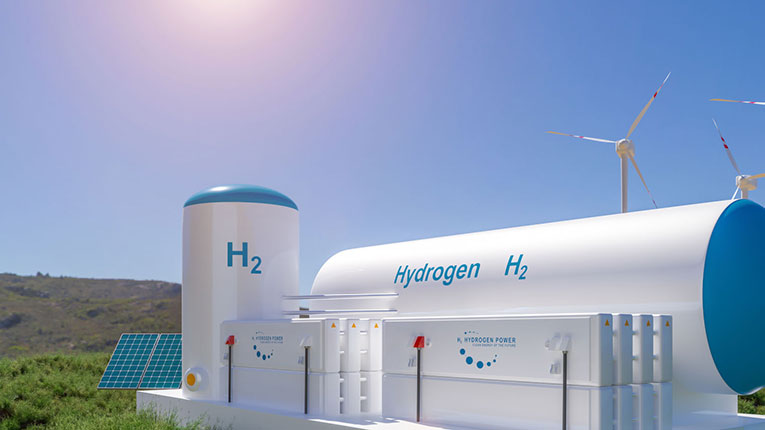Romanian region of Dobrogea has all the prerequisites for becoming a clean hydrogen Valley, having an exceptional potential for producing hydrogen from onshore and offshore renewable energy. Regional hydrogen demand in refineries, steel plants, and multiple transport modes gorws, and a strategic role that can be played by the Port of Constanța, say analysts Mihai Bălan and Mihnea Cătuți, according to Energy Policy Group (EPG).
In the European Union’s pathway to climate neutrality, decarbonised molecules such as hydrogen will contribute to eliminating ‘stubborn emissions’ in hard-to-abate sectors – e.g., high-temperature heat and feedstock in industry, aviation and long-haul shipping, and potentially large-scale district heating and long-term electricity storage. This will increase the flexibility and resilience of the energy system, while entailing a massive growth of the hydrogen market. The European Commission’s 2020 Hydrogen Strategy sets an ambitious roadmap to install 6 GW of electrolysers by 2024 and 40 GW by 2030, with a clear focus on the development of renewable hydrogen capacities and electrolyser value-chains.
EPG’s upcoming study Clean Hydrogen in Romania: Elements of a Strategy estimates that in Romania more than 1.4 GW of electrolysers need to be installed to reach the Fit for 55 targets for clean hydrogen in industry and transport. Given the country’s renewable potential, it is estimated that clean hydrogen could be produced in Romania for less than €2.5/kgH2.
The European hydrogen strategy anticipates first deployments to take place in so-called ‘hydrogen valleys’ – i.e., locally integrated hydrogen ecosystems typically comprising multi-million-euro of investments across a defined geographic area. Ideally, such valleys cover a substantial part of the hydrogen value chain, from production, storage, and transport to use in sectors like industry, mobility, and energy. Dobrogea is a prime location for this concept, as hydrogen can be produced and used regionally, and co-locating production and demand reduces the additional costs associated with long-distance transport infrastructure.
Indeed, Dobrogea is Romania’s renewable energy pole, offering the highest renewable energy potential, and hosting most of the country’s 3 GW of onshore wind capacities, which are expected to further expand both onshore and offshore. As shown by an EPG study, Romania has a significant offshore wind potential in the Black Sea, with an estimated total natural capacity of 94 GW, corresponding to 239 TWh of Annual Energy Production (AEP).
Moreover, the 1.4 GW of capacities from the Cernavodă nuclear power plant, also located in Dobrogea, are expected to be expanded by an additional two new reactors. All of this will happen in an area with limited local energy demand, leading to potential grid congestions. Transforming some of this decarbonised electricity in clean hydrogen could contribute to both alleviating the stress on the grid and further enabling the region’s decarbonisation.
Significant hydrogen demand can come from industry, especially the existing refinery (Petromidia), steel mill (Liberty Galați), and cement factory (LaFarge Medgidia), from district heating systems (Constanța, Galați, Tulcea, Brăila), and from transport – maritime (Ports of Constanța, Tulcea, and Mangalia) and aviation (Mihail Kogălniceanu International Airport).
The Port of Constanța can become the ideal gateway for hydrogen export. Indeed, it represents one of the most valuable assets for this endeavour. By synergising the offshore wind and hydrogen value chains, it could grow into a regional pole of decarbonisation for the entire Black Sea basin. The shipyards in Constanța, Mangalia, Tulcea, Braila or Galați can also contribute by building or retrofitting ships to run on clean hydrogen and hosting refuelling stations.
Turning the Dobrogea Hydrogen Valley into reality can bring great national benefits. According to the Commission’s Hydrogen Strategy, the hydrogen value chain will generate investments between €180 and €470 billion by 2050. Romania, particularly Dobrogea, can attract a considerable part of investments at EU level by 2030, which will total €24-42 billion for electrolysers, and €22-40 billion for renewable sources. Investments in hydrogen transportation, distribution, and storage in the EU will amount to a further €65 billion by 2030. The IEA estimates that 7.2 jobs are created for every million euros spent on the hydrogen production value chain.
To make this happen, the starting point should be the upcoming national hydrogen strategy, which should clearly set the objective of developing the Dobrogea Hydrogen Valley. This should be further bolstered through a national industrial decarbonisation strategy. The project can be developed in stages:
- Initially, Dobrogea can become a local, medium-scale hydrogen valley, with focus on industry. Local clean hydrogen production projects may supply several industrial and potentially transport off-takers. The replacement of fossil-based hydrogen supply and other more carbon intensive industrial processes should be targeted first.
- In the long term, by tapping into Romania’s cheap renewable energy potential, Dobrogea can develop into a larger-scale, international and export-driven hydrogen valley, with the Port of Constanța as its focal point.
